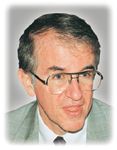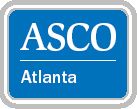Article
Chemo-stem cell combo is effective in salvage therapy
Author(s):
Atlanta-Patients with refractory metastatic testicular cancer who have not responded to their initial chemotherapy may respond to high-dose chemotherapy given in tandem with blood stem cell transplant, according to a study presented at the American Society of Clinical Oncology annual meeting here.

Lawrence H. Einhorn, MD, distinguished professor in the division of hematology/oncology and Lance Armstrong Foundation chair in oncology, Indiana University School of Medicine, Indianapolis, presented a retrospective review of 184 consecutive patients treated with tandem transplantation and high-dose carboplatin (Paraplatin) plus etoposide (Etopophos, Toposar, VePesid) over an 8-year period.

"This is not the same as the public's perception of stem cells," Dr. Einhorn told Urology Times. "It's [using] the patient's own stem cells that reside in the peripheral blood or marrow and [protecting the patient] from hematopoietic complications.
"We harvest the stem cells prior to giving high-dose therapy and store them in a freezer. Then we give the high-dose chemotherapy, just like we would give normal-dose chemotherapy. A couple of days later, we take the stem cells out of the freezer, thaw them at room temperature, and intravenously give them back to the patient. The stem cells go straight to the marrow and provide hematopoietic protection for the patients."
Dr. Einhorn started applying this technique in 1986 with bone marrow stem cells. Ten years later, he moved from working with marrow to peripheral blood stem cells. The latter, he said, are easier to harvest, the procedure is not as painful to the patient as is marrow cell harvesting, and it allows the blood count to recover much more rapidly than with marrow cells.
High response, low toxicity
Between 1996 and 2004, 184 of Dr. Einhorn's patients received peripheral blood stem cell transplants. Considering that these patients had not been cured with their initial chemotherapy, they did remarkably well, Dr. Einhorn reported. Of the entire series of 184 patients, 117 (64%) have been continuously disease-free over a median follow-up period of 42 months.
"Even more remarkably, when this is used for patients who are platinum refractory, which means they would be incurable with any other type of therapy, half of these patients were cured with high-dose therapy, showing you can overcome resistance by giving very-high-dose chemotherapy," he said.
Prior to administration of the transplant and high-dose chemotherapy, consisting of carboplatin, 700 mg/m2 , plus etoposide, 750 mg/m2 daily × 3, most patients received one course of standard doses of vinblastine (Velban), ifosfamide (IFEX), and cisplatin (Platinol) for cytoreduction.
Three early drug-related mortalities were reported, two from liver failure and one from acute respiratory distress syndrome. Three patients developed acute myelogenous leukemia, from which two died, and one patient developed glioblastoma.
Its high cure rate with acceptable toxicity makes the technique a suitable salvage therapy for germ cell tumor patients. While the technique is not new, Dr. Einhorn's report covers the largest such series.
"What is new is a clear demonstration that, even when used in totally platinum-refractory patients, they can unquestionably overcome drug resistance," Dr. Einhorn said.















